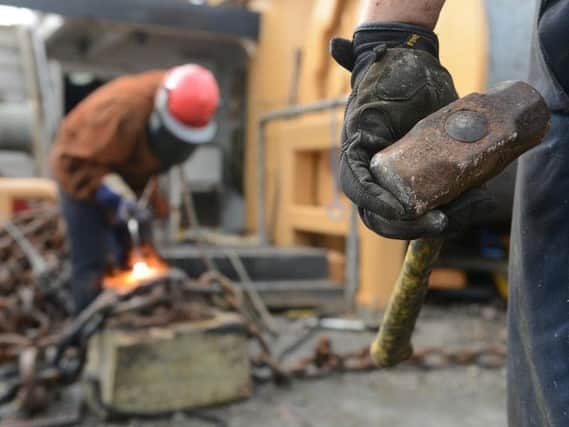Equal numbers of Catholics and Protestants in workforce for the 'first time'


The statistics, which came from the Labour Force Survey Religion Report 2015 showed that the proportion of protestants aged 16 and over in the workforce had decreased by 12% between 1990-2015, while the numbers of Catholics has gone up by 6%.
This means there is now a 50/50 split, with both religions making up 44% of the workforce each. Over this period, the proportion of the population reported as ‘other/non-determined’ has doubled (from 6% to 12%).
Advertisement
Hide AdAdvertisement
Hide AdA spokesperson for The Executive Office said: "This is the first time an equal split has been estimated for the 16 and over population.


"The 2015 report reflects well established trends evident over the previous years of the report and a stabilising picture of equality in the workforce between the two religions.
"Trends identified include growth of Catholic numbers within the adult (16 and over) population between 1990 and 2015. Considering those who identify as either of the two religions, this population is estimated to be split 50/50 in 2015.
"This is also the first time the Northern Ireland Statistics and Research Agency (NISRA) have estimated the same economic activity rates and inactivity rates for both Protestant and Catholics and again the first time that NISRA have estimated the same unemployment rate for the two religious groups."
Advertisement
Hide AdAdvertisement
Hide AdIn 2015, the statistics show that Catholics made up a larger proportion of the working age (16-64) population, while Protestants comprised a larger proportion of the older (60+) population.


The report also indicated that there were higher levels of higher levels of economic activity and lower levels of economic inactivity among Protestants from 1992-2015 - compared to Catholics.
Now, they say rates have converged, with the same rates reported for both religions in 2015 (working age economic activity rate 72%/ working age economic inactivity rate 28%).
Between 1992 to 2015, Catholics have generally experienced higher rates of unemployment than Protestants, although again the gap has closed over time and in 2015 the unemployment rate was at 6% for both Protestants and Catholics.
Advertisement
Hide AdAdvertisement
Hide AdA consistently higher proportion of working age Protestants have been in employment compared to their Catholic counterparts between 1992 and 2015.
This difference has decreased over time.
In 1992, 70% of working age Protestants and 54% of working age Catholics were in employment but by 2015 these rates have gone up to 68% and 67% respectively.